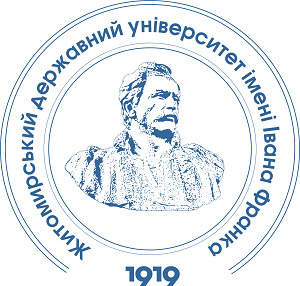POST-TRAUMATIC DEVELOPMENT AS A LIMINAL PROCESS IN THE THEORY AND PRACTICE OF PSYCHOSYNTHESIS
DOI:
https://doi.org/10.32782/psy-2024-4-11Keywords:
liminality, liminal pause, identification, post-traumatic development, psychosynthesis, disidentification, Self, conscious Self, subpersonalities.Abstract
Abstract. The authors of the article address the issue of psychological liminality, which they approach through the interconnection of the external and internal, as analyzed within the fundamental concepts of psychosynthesis. Based on this foundation, a theoretical-methodological analysis is conducted on the post-traumatic development of adults as a liminal process, distinguishing between threshold self-knowledge and threshold self-transformation. The study focuses on the theoretical substantiation of the primary stages of psychosynthesis, which coincide with psychoeducational tasks of post-traumatic development as a targeted self-development process for adults within various types of organized psychological support. Through self-reflection on the empirical application of psychosynthesis during a full-scale war, the authors introduce the concept of post-traumatic neurotization (liminal pause) due to the dominance of a protective subpersonality within the structure of a traumatized client’s personality. Instead, an alternative psychological recovery way is proposed – post-traumatic development, which prevents over-identification with either the traumatized or protective subpersonalities. The methodology of post-traumatic development, based on psychosynthesis, emphasizes the development of the conscious Self’s ability to disidentify from diverse subpersonalities within the structure of threshold self-knowledge («self-knowledge»). In the threshold self-transformation structure, the authors illustrate issues of self-regulation and self-realization of adults in the post-liminal period through the development of will. It is emphasized that only through achieving identification uncertainty, where any subpersonality is perceived by the adult client as a false identification, does the capacity for «self-mastering» and «self-transformation» become possible. It is noted, that post-traumatic growth is viewed as an untimely process of psychological survival within the potential post-traumatic development, aimed at the maximal realization of the Self, a theoretical analysis of which is also presented in the article.
References
Кучеренко Є. В. Змінені стани свідомості як об’єкт психологічного дослідження. Вісник Інституту розвитку дитини. Київ : Видавництво НПУ імені М. П. Драгоманова, 2013. Вип. 30. С. 133–137.
Кучеренко Є. В. Психосинтез: теорія і практика психотерапії : навчально-методичний посібник. Вінниця : ТОВ «ТВОРИ», 2008. 296 с.
Максименко С. Д. Генеза здійснення особистості. Київ : Вид-во ТОВ «КММ», 2006. 256 с.
Роменець В. А., Маноха І. П. Історія психології ХХ століття : навчальний посібник. 2-ге вид. Київ : Либідь, 2003. 989 с.
Теслер О. В., Кучеренко Є. В. Екзистенційна тривожність як проблема в психосинтезі. Перспективи розвитку сучасної психології : збірник наукових праць. Переяслав : УГСП, 2022. Випуск 10. С. 81–86.
Франкл В. Лікар та душа. Основи логотерапії. Харків : КСД, 2023. 320 с.
Una psicoterapia dalla parte dell'uomo. Il manifesto storico del 1977 nella psicosintesi terapeutica / Alberti A., Bartoli S., Caldironi B., Ferrucci P., Giorni G., Peresson L., Rosselli M. Firenze : L'Uomo, 2012. 120 p.
Assagioli R. Conflicts, Crises and Synthesis. A collection of articles / In K. Sørenthen (Ed.). Kentaur Publishing, 2023. 211 p.
Assagioli R. Jung and Psychosynthesis: A Series of Three Lectures Given in 1966 at the Istituto di Psicosintesi, Florence, Italy. New York : Psychosynthesis Research Foundation, 1967. Issue No. 19. 28 p.
Assagioli R. Psychosynthesis. A Manual of Principles and Techniques. New York : Viking Compass Edition, 1974. 323 p.
Assagioli R. Subpersonalities. A collection of articles / In K. Sørenthen (Ed.). Kentaur Publishing, 2022.124 p.
Assagioli R. The Act of Will: A Guide to Self-actualisation and Self-realisation. Baltimore : Penguin Books Inc, 1974. 278 p.
Assagioli R. Transpersonal Development. The Dimention Beyond Psychosynthesis. Forres : Smiling Wisdom an imprint of Inner Way Productions, 2007. 300 p.
Assagioli R., Vargui J. The Superconscious and the Self. 1973. URL: https://kennethsorensen.dk/en/the-superconscious-and-the-self/.
Crampton M. Psychosynthèse. Aspects clés de la théorie et de la pratique / In Dabrowski, K. (dir.) Psychotherapies Actuelles. Sainte-Foy, Quebec: Editions Saint-Yves, 1977. P. 41–77.
De Pari M. Liminal Consciousness – A Systemic Framework for «Altered States of Consciousness». Proceedings of the 61st Annual Meeting of the ISSS – 2017 Vienna, Austria, 2017. Retrieved from https://journals.isss.org/index.php/proceedings61st/article/view/3268.
Firman J. Notes Roberto Assagioli, by John Firman, 2020. URL: https://www.psychosynthesiscircle.com/notes.
Russell D. Psychosynthesis and Western Psychology. Psychosynthesis Digest. 1981. Vol. I, №1. URL: https://kennethsorensen.dk/en/psychosynthesis-and-western-psychology/.
Sanner E. Yehor Kucherenko in conversation with Eva Sanner: Psychosynthesis in wartime. Inside Out. The Irish Journal for Humanistic and Integrative Psychotherapy. 2023. № 99. P. 12–16.
Schaub R., Schaub B. Dante's Path: A Practical Approach to Achieving Inner Wisdom. New York : Penguin Books Inc, 2003. 240 p.
Sørenthen K. The Seven Types: Psychosynthesis Typology; Discover Your Five Dominant Types. Kentaur Publishing, 2019. 454 p.
Sørenthen K. What is Self-realisation? A Comparison of Assagioli’s and Firman & Gila’s definition of Selfrealisation, 2020. URL: https://kennethsorensen.dk/en/what-is-self-realisation/.
V argiu J. Subpersonalities. Synthesis Journal. The Realization of the Self. 1974. Vol. 1. P. 52–90.






